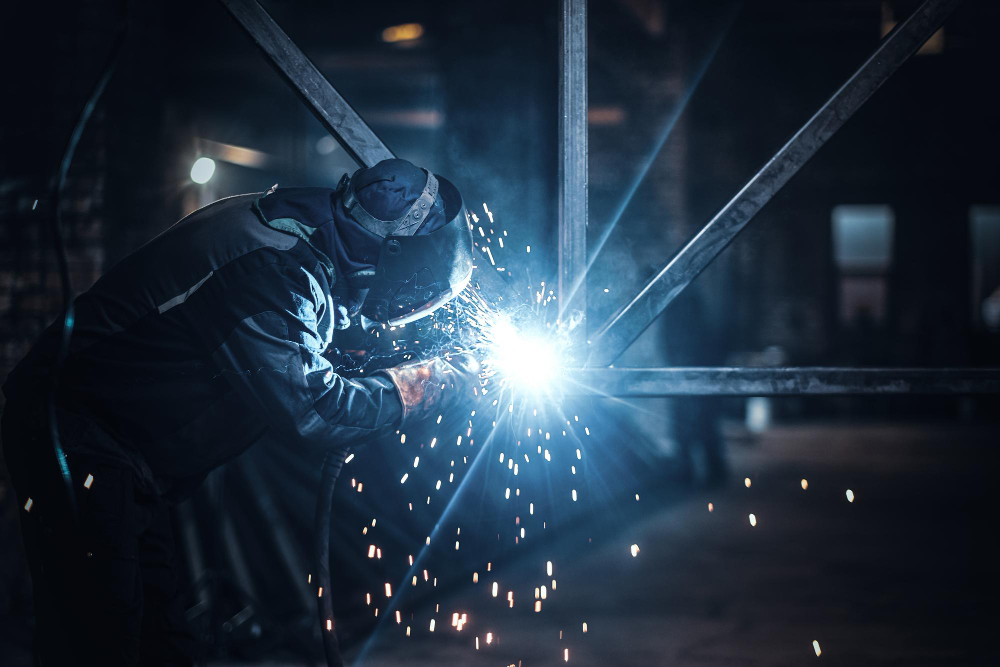When we explore the marvels of modern architecture and industrial development, we often overlook the fundamental elements that make such wonders possible. One such pivotal element is the backbone of many contemporary structures and machinery – steel. More specifically, the process of transforming steel into versatile forms, known as structural steel fabrication, is a cornerstone of modern engineering and construction. This intricate and fascinating process not only shapes the skyline of our cities but also supports the functionality of various industries. Let’s start the discussion on structural steel fabrication, understanding its process, types, and the plethora of uses it offers.
Exploring Structural Steel Fabrication
Structural steel fabrication is a multifaceted process involving the conversion of raw steel into products or structures. This process plays a critical role in various industries, serving as the foundation for buildings, bridges, and countless other constructions. It involves a series of steps, each essential in achieving the desired strength, durability, and flexibility in steel products.

Raw Materials In Steel Fabrication
The journey of structural steel fabrication begins with its raw materials. The primary ingredients in this process include:
- Slabs: Rolled metal ingots from steel mills.
- Billets: Square cross-sectioned steel shaped through rolling, forging, or extrusion.
- Plates, Sheets, and Strips: These forms, derived from steel slabs, vary in thickness, with sheets and strips being thinner than plates.
- Bars: Produced by rolling billets, these long, solid pieces of steel come in various cross-sections.
Each of these materials plays a unique role in determining the properties and applications of the final steel product.
The Journey Of Steel Fabrication
Structural steel fabrication is not just about melting and molding metal. It’s a detailed process involving several critical steps:
- Design Preparation: Crafting blueprints for the desired product.
- Raw Material Acquisition: Procuring the necessary steel forms.
- Cutting and Drilling: Shaping steel to specific dimensions.
- Bending and Welding: Altering steel shapes and joining parts.
- Quality Assurance: Ensuring the product meets all standards.
- Final Touches: Applying finishes for protection and aesthetics.
Each step is pivotal in ensuring the functionality and safety of the steel structure.
Diverse Techniques In Steel Fabrication
The versatility of structural steel fabrication lies in its various techniques, each serving a specific purpose:
- Cutting: Tailoring steel to exact sizes.
- Bonding: Joining steel parts together.
- Folding: Creating angles in steel pieces.
- Extrusion: Shaping steel by forcing it through dies.
- Punching: Creating holes or indentations in steel.
These techniques allow for a wide range of applications and designs in steel fabrication.
Steel Fabrication In Action
The real-world applications of structural steel fabrication are vast and varied. Some key uses include:
- Building Infrastructure: Roofs, bar joists, universal beams, and columns.
- Manufacturing and Industry: Automotive parts, industrial equipment, and pipe racks.
- Utility and Support: Ladders, grating, skids, and platforms.
Each application underscores the importance and versatility of structural steel fabrication in our daily lives.
Pioneering Structural Steel Fabrication
Structural steel fabrication is more than just a process; it’s a blend of art and science that significantly shapes our surroundings. From the majestic rise of skyscrapers to the intricate workings of machinery, it plays a pivotal role in the fabric of modern life. Understanding this process sheds light on how our environment is constructed and underlines the innovation and expertise involved in converting raw materials into the structural backbone of our world.
Bigfoot Pipe And Piling stands at the forefront of this transformative journey, demonstrating how structural steel fabrication is not merely a technical endeavor but a pathway to architectural and engineering marvels. As we advance in creating innovative structures and machinery, the contribution of structural steel fabrication, spearheaded by leaders like Bigfoot Pipe And Piling, remains indispensable, promising a future of even more remarkable achievements and sustainable solutions.
